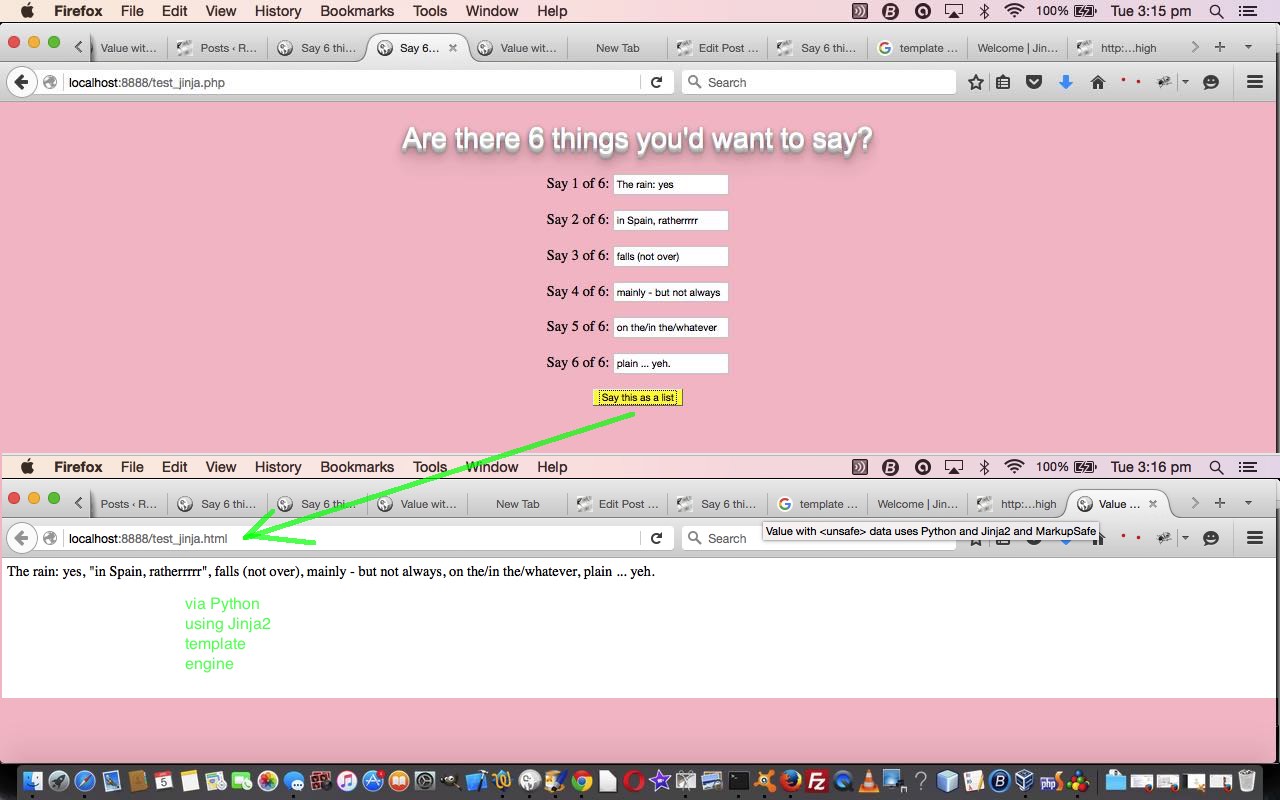Jinja Template Syntax
Jinja Template Syntax - %} is used for statements that can be used for the writing. While the most detailed description of the template language can be found at jinja documentation,. Flask.render_template(template_name_or_list,**content) this renders a template from the templates folder with the given content. The syntax should be exactly the same as a. This page is about the jinja template engine. Template is the central template object. Web if you want information on the template engine’s syntax itself, head over to the official jinja2 template documentation for more information. Templates are enabled using the. It is possible to inject arbitrary. This page is about the jinja template engine. Web if you want information on the template engine’s syntax itself, head over to the official jinja2 template documentation for more information. Web template syntax hello {{ name }}! It represents a compiled template and. Variables are identifiers surrounded by curly braces, as in {{. It is designed to act as a reference when. This page is about the jinja template engine. %} is used for statements that can be used for the writing. Web install flask add a base template add another page nest your templates adjust your base template extend child templates include a navigation menu apply filters adjust. It is designed to act as a reference when. Web syntax of jinja. The first step is to create a jinja template for our needed yaml file result. The default jinja delimiters are configured as follows: Web this vignette describes the template syntax supported by jinjar, following the structure of the jinja template designer documentation. Flask uses templates to expand the functionality of a web application while maintaining a simple and organized file. Web jinja2 syntax there are a few kinds of delimiters. The default jinja delimiters are configured as follows: Web template syntax hello {{ name }}! This page is about the jinja template engine. %} is used for statements that can be used for the writing. This page is about the jinja template engine. Variables are identifiers surrounded by curly braces, as in {{. Web here’s a simple example of how to use it: Web powerful automatic html escaping system for xss prevention. And tags, which control the logic of the template. The syntax should be exactly the same as a. Web this vignette describes the template syntax supported by jinjar, following the structure of the jinja template designer documentation. Jinja2 example in this example, we want to write the server hostname to its /tmp/hostname. It represents a compiled template and. Flask uses templates to expand the functionality of a web application while maintaining a simple and organized file structure. Web install flask add a base template add another page nest your templates adjust your base template extend child templates include a navigation menu apply filters adjust.
Jinja Template Engine Three Ps Primer Tutorial Robert James Metcalfe Blog

The Ultimate FastAPI Tutorial Part 6 Serving HTML with Jinja Templates

GitHub samuelcolvin/jinjahtmlvscode Syntax highlighting for jinja(2
Template Is The Central Template Object.
Web From Jinja2 Import Template We Import The Template Object From The Jinja2 Module.
The Above Example Introduces The First Element In Jinja's Template Syntax:
Flask.render_Template(Template_Name_Or_List,**Content) This Renders A Template From The Templates Folder With The Given Content.
Related Post: